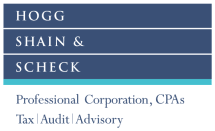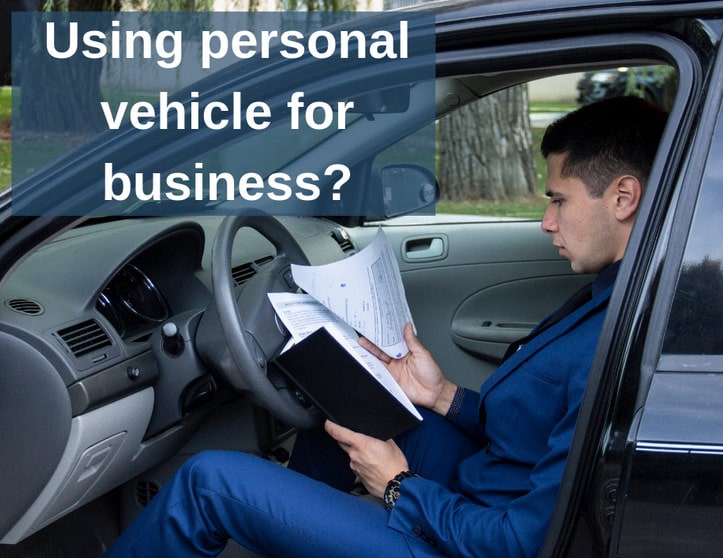Business Use of a Vehicle in Canada
A fundamental principle of Canada’s tax legislation is that an expenditure should only be deductible if it was incurred for the purposes of gaining or producing income. It holds then that expenditures that are personal in nature can’t be claimed against one’s income. While that sounds simple and straightforward in theory, real life has a way of complicating things.
While commuting to and from your main place of employment isn’t considered travel for business purposes, consider a salesperson who is required, as part of their conditions of employment, to use their personal vehicle to visit client sites and make sales calls. The salesperson’s employer is benefiting from this since it doesn’t need to acquire and maintain a company-owned vehicle and the salesperson should be entitled to claim vehicle operating costs, as well as leasing or finance interest charges, against their income.
How to Substantiate Business-Use of a Vehicle Expense Claims
In order for the Canada Revenue Agency (“CRA”) to allow a taxpayer’s vehicle expenses, a taxpayer must be able to provide the following information to the CRA:
- Receipts and invoices: Before partitioning mileage between personal and business use, it’s important for a taxpayer to maintain copies of receipts or invoices for every amount being claimed. Taxpayers run into problems when they try to rely on credit card or bank account statements, which the CRA, generally, doesn’t accept since the statements don’t provide details about the expenditures. For example, while filling up their car at a gas station, an individual might also buy something to drink, snacks, etc. and the CRA would be unable to see these ineligible amounts without a receipt.
- Logbook: Maintaining a logbook of each trip taken for business purposes is essential in order for a taxpayer to claim all the vehicle expenses to which they are entitled. Without a logbook, a taxpayer is at the CRA’s whim. Some CRA representatives are reasonable and will accept a flat percentage, say 20% or 30% of expenses, in lieu of a logbook but others may deny the expenses in full.
A properly maintained logbook provides the following information for each business trip:
- date,
- destination traveled to,
- purpose of the trip, and
- kilometers driven.
The odometer at the start and end of each fiscal period/tax year should also be jotted down.
Other Tricks and Traps
There are a few additional points we would like to highlight for taxpayers who use a personal vehicle for business purposes.
Employees who Work from Home
As mentioned earlier, a typical employee’s daily commute to their employer’s office isn’t considered travel for business purposes. However, this may not be the case for employees who primarily work from a home office. In such a situation, the home office is the employee’s principal place from which they discharge their duties of employment and any travel to the employer’s office, for a meeting, to pick-up samples/inventory, etc., would be for business purposes.
This issue has been settled by case law. The problem that taxpayers who work from home can run into is that the tax cases that established this precedent were done as informal procedures at the Tax Court of Canada (the “TCC”). The TCC hears either informal or general procedures, with informal ones being cases where the amount in question is $25,000 or less. While the outcomes of a case heard under an informal procedure are binding, the CRA is allowed to ignore precedent set by an informal procedure. In other words, the CRA may initially deny vehicle expenses pertaining to travel to the employer’s office. A taxpayer will have to file a formal notice of objection or even make an appeal to the TCC for relief.
If you work from home and are required to travel for employment purposes, it is doubly important to maintain receipts and a logbook as this information may end being your primary source of evidence at the TCC.
Amount of Expense to Claim
Employees who incur expenses as part of their employment (who are otherwise not GST/HST registrants) should claim vehicle expenses inclusive of GST/HST. Please note that the GST/HST component must also be pro-rated for businesses use.
Simplified Logbook
The CRA has an administrative policy whereby a taxpayer can use a three-month sample and extrapolate the business use out for the entire year. While this policy can certainly save a taxpayer some time and effort, to qualify, a taxpayer must:
- have previously maintained a logbook for a complete year to establish a base year of business use,
- be able to show that the base year is representative of a typical year’s business use, and
- the extrapolated business use must be within 10% of the business use established by the base year. For example, in 20X1, a taxpayer drove 20,000 kilometers total, 12,000 of which were for business purposes. In 20X2, the taxpayer again drove 20,000 kilometers and wants to use a simplified logbook. In the three-month sample used, 75% of travel was business related, or 15,000 kilometers annualized. Since this 3,000 kilometer increase on 12,000 is more than 10%, the CRA would not accept the simplified logbook.
In highly cyclical industries, it may not be feasible or advantageous to use the simplified logbook approach. In addition, CRA administrative policies are not binding by law and may be changed or withdrawn at any time.
For individuals that claim business use of a personal vehicle, maintaining adequate records and tracking mileage is paramount in ensuring that a taxpayer gets every dollar of deduction to which they are entitled. If you have questions or concerns about business use of a vehicle or other tax related issues, please contact a member of the tax team at Hogg, Shain & Scheck:
Chris Munn CPA, CA
Tax Partner, Hogg, Shain & Scheck
(416) 499-3100 ext. 246
Philip Varmuza CPA, CA
Tax Manager, Hogg, Shain & Scheck
(416) 499-3100 ext. 225
pvarmuza@hss-ca.com






